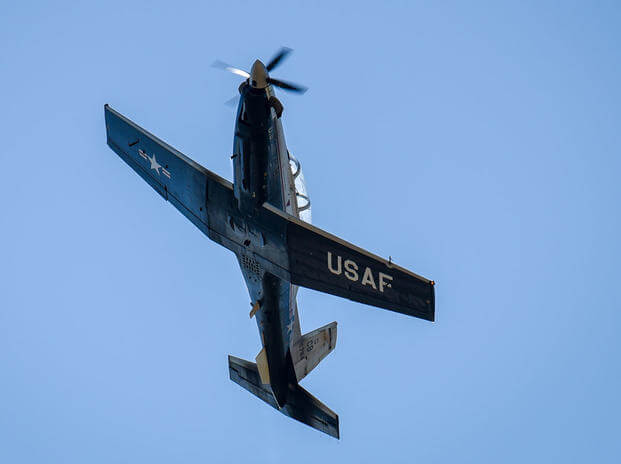A T-6 Texan II trainer from Sheppard Air Force Base, Texas, crashed Wednesday, base officials said.
The crash occurred shortly before 2 p.m. near Lake Waurika, Oklahoma, roughly 40 miles from the training base, according to an announcement posted on social media.
Air Force officials said initial findings suggest that both the pilot and co-pilot were able to eject from the trainer. Emergency crews are on their way to the scene.
The crash is under investigation, according to the announcement. A base spokeswoman told Military.com more information will be released as it becomes available.
Related content:
- Air Force Greenlights T-6 Trainer as Safe to Fly After Recent Crash
- No Grounding for T-38 Fleet After 5th Crash in 12 Months, Air Force Says
- T-6 Trainers Restart Flights after Rash of Unexplained Pilot Symptoms
In September, leaders called for a "brief pause" following a crash involving a T-6 from Joint Base San Antonio-Randolph, Texas. The trainer went down roughly 30 miles from the base Sept. 18. The crew ejected safely and sustained minor injuries, officials said at the time. The pause was lifted a few days later.
That crash occurred just hours after Lt. Gen. Steven Kwast, commander of Air Education and Training Command, talked to reporters about a six-month Safety Investigation Board report that examined the On-Board Oxygen Generating System, or OBOGS, on the T-6.
Last year, the Air Force ordered an operational pause for the T-6 fleet after pilots suffered a series of unexplained physiological episodes, or UPEs.
As a result, AETC on Feb. 1 ordered an indefinite operational pause for all T-6 aircraft at Columbus Air Force Base, Mississippi; Vance Air Force Base, Oklahoma; and Sheppard Air Force Base, Texas. That pause was lifted Feb. 28.
A team of experts determined that the OBOGS' filter and drain valves failed at higher rates than expected. The discovery led to repairs and increased inspections, but pilots continued to suffer from UPEs.
"The deep work we have done ... to really find out what is the root cause of why we were having some issues with the oxygen delivery system for the T6 revealed a whole host of recommendations, and many of them are maintenance related," Kwast said in September, adding that the physical severity of the UPEs pilots suffered "is very, very low."
"But again, our responsibility is to really know what is going on in the physics here and making sure we are doing everything in our power to make sure we have safe and effective aircraft for our aircrew to train in," he said.
-- Oriana Pawlyk can be reached at oriana.pawlyk@military.com. Follow her on Twitter at @Oriana0214.












